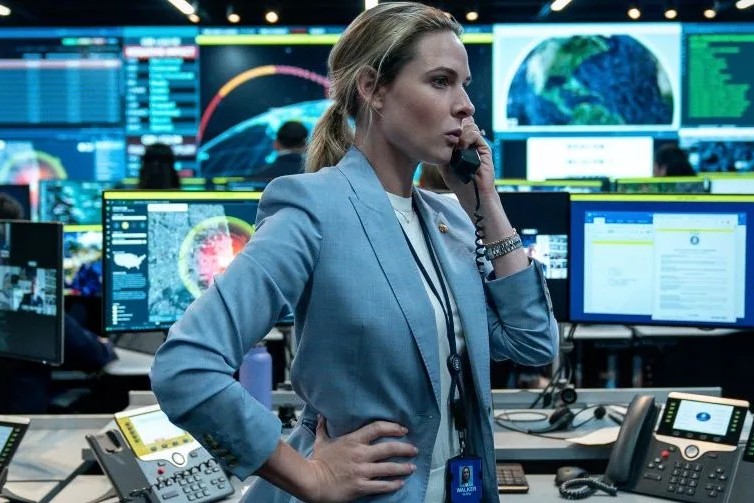It has been eight years since Kathryn Bigelow’s last film, Detroit. This year, in a new collaboration with Netflix, Bigelow returns with A House of Dynamite, a three-part political thriller about an unidentified missile.
The film recounts the 18 minutes after detection of an unattributed ICBM heading toward Chicago, told three times from different vantage points: ‘Inclination Is Flattening’ follows the White House Situation Room, where Captain Olivia Walker (Rebecca Ferguson) oversees the watch floor as officials argue over test, spoof, or first strike while early warning updates narrow the trajectory and Major Daniel Gonzalez (Anthony Ramos) at Fort Greely, Alaska attempts two Ground-Based Interceptors, one fails to deploy and the other fails to neutralise. ‘Hitting a Bullet With a Bullet’ moves to United States Strategic Command at Offutt Air Force Base, where General Anthony Brady (Tracy Letts) manages tracking and response options as Deputy National Security Advisor Jake Baerington (Gabriel Basso) and Ana Park (Greta Lee) weigh attribution and possible cyber compromise. The final section, ‘A House Filled With Dynamite’ stays with the President (Idris Elba) as briefers deliver conflicting Pacific attributions, the cabinet presses for a retaliatory plan, the nuclear football is prepared, launch authentication is recited, and the film closes without revealing the attacker, the outcome in Chicago, or the President’s final decision.
The question for the film is, ‘why’? A House of Dynamite, with a screenplay from Noah Oppenheim, has overly complicated itself. Even within each chapter, multiple storylines and perspectives run at the same time. Simply, why do they have three chapters that supposedly offer different perspectives, then pack in more perspectives within the same chapter, some of which do not connect in any meaningful way? And although the ranks appear to rise from Captain in the first, to General in the second, then to President in the third, the film says nothing deep, nuanced, or refreshing about these people. Why tell their stories when it is the citizens in Chicago who face the apocalypse? This also speaks to another weakness of the film: its characters.
After the long end credits, it is hard to recall anything that makes these many figures feel textured or alive. Most register as functions within a bureaucracy that fails to protect its public. Attempts to humanise them with stray details about partners or families feel grafted on rather than earned. Such futile attempts also make me question the necessity of another ill-considered storytelling tactic: why hold Idris Elba’s President in reserve until the final section, with only a disembodied voice beforehand? Why choose concealment if it adds neither depth nor urgency? What, exactly, does it add to the urgency of the last 18 minutes or to the moral weight of the choice at hand?
With its overly complicated structure and thin character work, the film feels empty at its heart. Its deliberate ambiguity leaves the ending without foundations.Ambiguity can be poetic and beautiful in films, yet the way it is used here keeps me asking why. Why is everything ambiguous here, and does it serve anything meaningful? Is it really ambiguity that makes one think and question, or is it simply avoidance, a refusal to offer any answer with certainty and courage? If the president of the United States shows no political backbone at this moment, what kind of president is he? Beyond stoking fear, does A House of Dynamite say anything new about our era, or explain why the West, especially America, remains haunted by unidentifiable enemies and the imagined end of its own power?
Compared with an American classic on the same subject like Dr. Strangelove, A House of Dynamite feels strangely hollow. Kubrick’s satire found clarity in chaos, asking questions through fear and absurdity. Bigelow’s disappointing film, by contrast, disappears into its own machinery, where process replaces emotion and protocol dulls thought. Beneath its intricate surface lies a film with no real characters and no moral centre.
Availble to stream on Netflix now


Comments